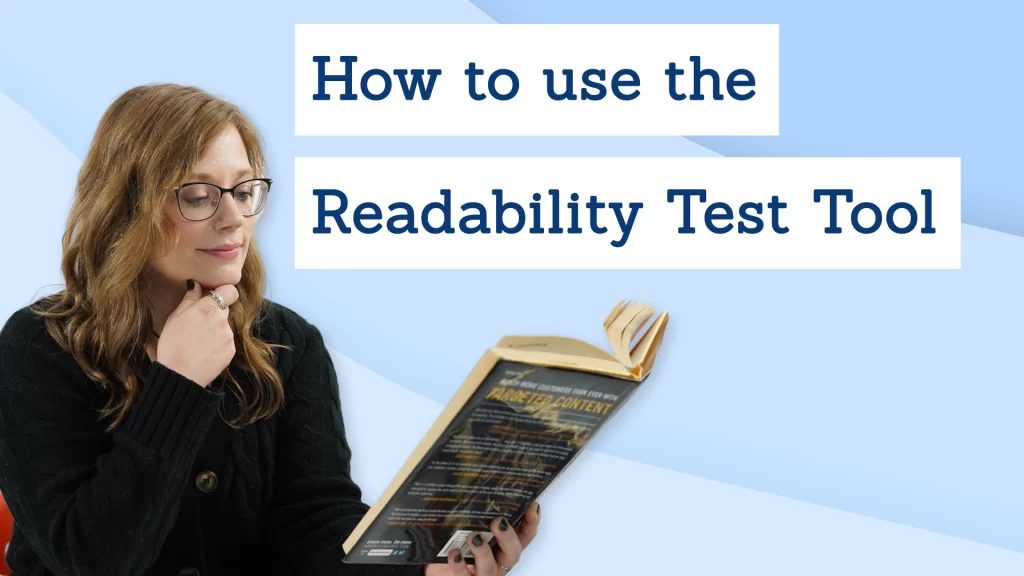
In the fast-paced digital world, where attention spans are shorter than ever, the clarity and simplicity of your content can make or break your online success. Whether you’re a marketer, a student, or a professional writer, ensuring that your content is easy to read and understand is crucial. This is where readability tools come into play. These tools help you assess and improve the readability of your writing, making it more accessible and engaging for your audience.
In this article, we’ll explore the importance of readability, how it impacts SEO performance, and which tools you should use to enhance your content’s clarity and effectiveness.
What Is Readability and Why It Matters
Readability refers to how easily a reader can understand a piece of writing. It involves factors such as sentence length, vocabulary complexity, and overall structure. The goal of readability is to ensure that your content is clear, concise, and engaging for your target audience.
In the United States, the average reading level of adults has historically been around an 8th-grade level. However, with the rise of short attention spans and the impact of the pandemic, this level may have dropped even further. That’s why it’s essential to make your text as simple and straightforward as possible.
Poor readability can lead to high bounce rates, lower engagement, and reduced search engine visibility. On the other hand, content that is easy to read and understand can significantly improve user experience, increase dwell time, and boost your website’s ranking on search engines like Google.
How Readability Impacts SEO Performance

Search engines like Google prioritize content that provides value to users. If your content is difficult to read, it can negatively affect your SEO performance in several ways:
- Higher Bounce Rates: Readers who struggle to understand your content are more likely to leave your site quickly, increasing your bounce rate.
- Lower Dwell Time: If your content isn’t easy to read, visitors may not spend much time on your page, which can hurt your rankings.
- Reduced Engagement: Poor readability can lead to lower click-through rates and fewer shares, which are important signals for search engines.
- Accessibility Issues: Search engines aim to serve content that is accessible to the widest possible audience. If your content is too complex, it may not reach its full potential.
By improving the readability of your content, you can enhance user experience, increase engagement, and ultimately boost your SEO performance.
Step-by-Step Implementation Framework
To effectively use readability tools and improve your content, follow this step-by-step framework:
- Define or Audit the Current Situation
- Start by analyzing the readability of your existing content. Use tools like Hemingway Editor or Grammarly to identify areas that need improvement.
-
Assess your target audience’s reading level and adjust your content accordingly.
-
Apply Tools, Methods, or Tactics
- Choose a readability tool that suits your needs. Options include Hemingway Editor, Grammarly, ProWritingAid, and Yoast SEO.
- Use these tools to check sentence structure, vocabulary, and overall clarity.
-
Make necessary adjustments to simplify complex sentences and eliminate jargon.
-
Measure, Analyze, and Optimize
- Track metrics such as bounce rate, dwell time, and engagement after making changes.
- Continuously refine your content based on feedback and performance data.
- Experiment with different readability levels to find what works best for your audience.
Real or Hypothetical Case Study

Let’s look at a hypothetical case study to see how improving readability can impact a blog’s performance.
Scenario: A marketing blog had a high bounce rate and low engagement. After using Hemingway Editor to simplify their content, they saw a 40% reduction in bounce rate and a 30% increase in dwell time. Their traffic also increased by 25% over three months.
Key Takeaways:
– Simplifying content led to better user engagement.
– Improved readability contributed to higher search engine rankings.
– Clear and concise writing helped build trust with the audience.
This example demonstrates how focusing on readability can lead to measurable improvements in both user experience and SEO performance.
Tools and Techniques for Readability
There are numerous tools available to help you analyze and improve the readability of your content. Here are some of the most popular ones:
- Hemingway Editor
- Highlights complex sentences and suggests simpler alternatives.
- Assigns a readability grade level, helping you understand how easy your text is to read.
-
Ideal for writers looking to simplify their language and improve clarity.
-
Grammarly
- Offers grammar checks, tone detection, and readability scores.
- Provides suggestions on sentence structure and word choice.
-
Great for both casual and professional writers.
-
ProWritingAid
- Analyzes content for clichés, sentence length, and overuse of specific words.
- Offers 20+ reports to help improve writing quality.
-
Useful for writers who want detailed feedback on their work.
-
Yoast SEO
- Combines SEO analysis with readability checks.
- Evaluates sentence length, paragraph transitions, and subheadings.
-
Helps create content that is both readable and optimized for search engines.
-
LanguageTool
- Checks for grammar, style, and punctuation errors.
- Supports 22 languages, making it a versatile option for international writers.
- Available as a downloadable app or browser extension.
These tools can help you create content that is not only easy to read but also optimized for search engines and user engagement.
Future Trends and AI Implications
As AI continues to evolve, its role in content creation and readability analysis will become even more significant. Tools like ChatGPT and other AI-powered platforms are already being used to generate content, but they often lack the clarity and simplicity needed for optimal readability.
Future trends in readability tools may include:
- AI-Powered Recommendations: Tools that use machine learning to provide personalized readability suggestions based on your audience’s preferences.
- Voice and Multimodal Search Optimization: As voice search and visual content become more prevalent, readability tools may need to adapt to new formats and user behaviors.
- Real-Time Feedback: Tools that offer instant feedback as you write, helping you maintain a consistent level of clarity throughout your content.
Staying ahead of these trends will be crucial for content creators looking to maintain relevance and engagement in the evolving digital landscape.
Key Takeaways
- Readability Matters: 75% of online readers abandon difficult-to-read content, making clarity essential for engagement and retention.
- Utilize Readability Tools: Tools like Hemingway Editor, Grammarly, and Yoast SEO can help assess and improve your blog’s clarity and structure.
- Boost SEO Performance: Readable content not only engages readers but also ranks better on search engines, enhancing overall visibility.
- Key Metrics to Monitor: Focus on sentence length, vocabulary complexity, and paragraph organization to optimize readability scores.
- Integrate with Auto Page Rank: This tool combines readability analysis with essential SEO metrics for comprehensive performance insights.
Meta Title: Readability Tools: Which One Should You Use (and Why)
Meta Description: Discover the best readability tools to improve your content’s clarity, engagement, and SEO performance. Learn why readability matters and how to choose the right tool for your needs.
SEO Tags (5): readability tools, content optimization, SEO performance, readability score, content clarity
Internal Link Suggestions: Parameter #1: Content Optimization, Parameter #3: SEO Best Practices, Parameter #5: User Experience Design
External Source Suggestions: https://hemingwayapp.com, https://www.grammarly.com, https://yoast.com







